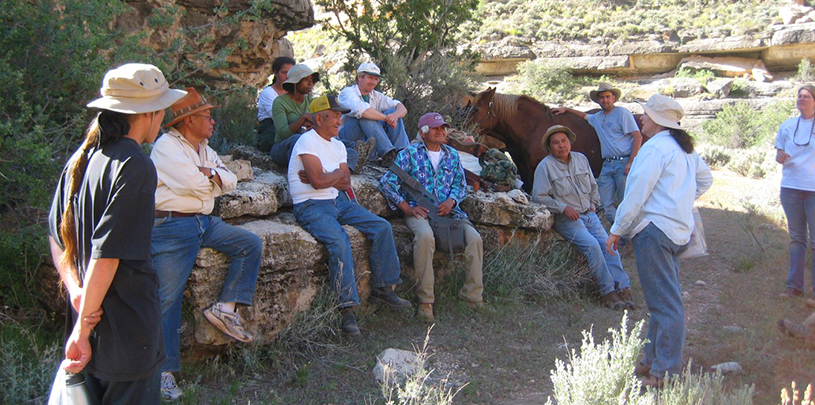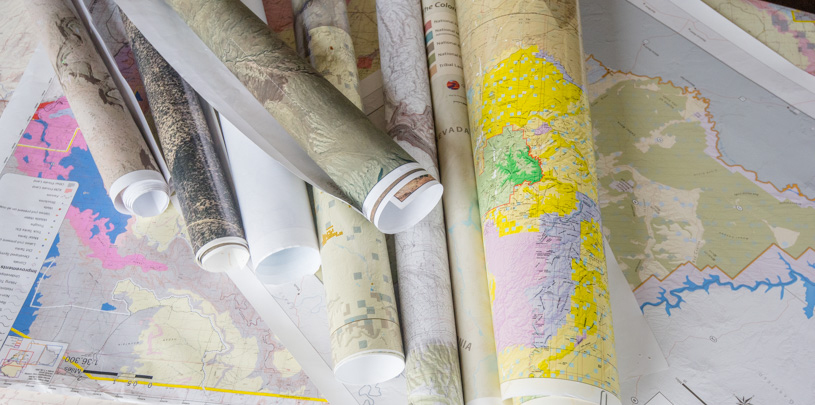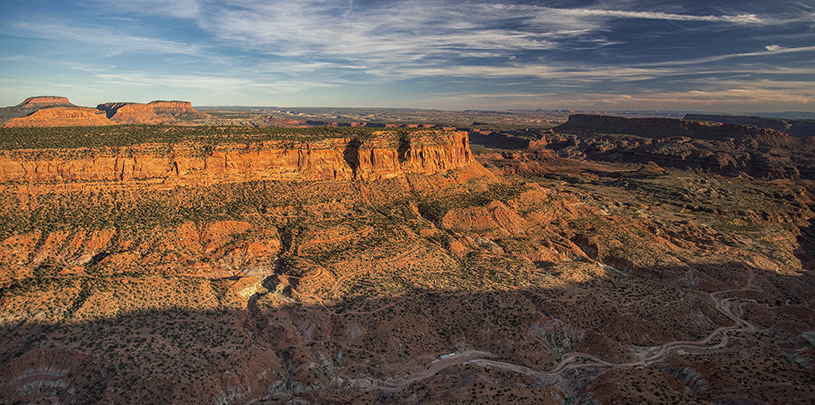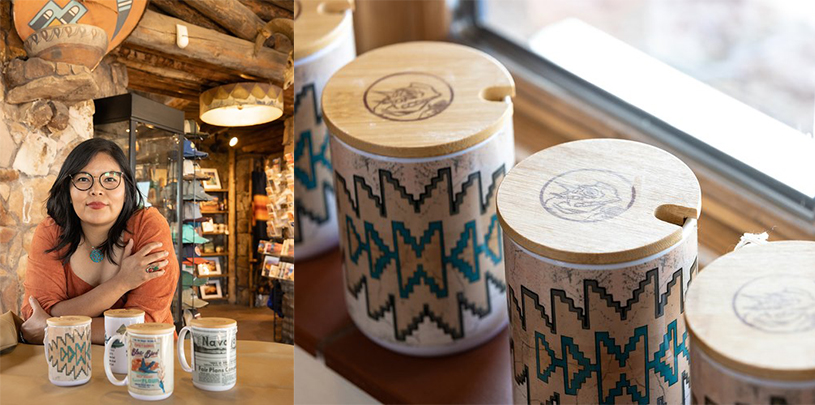 by Ed Grumbine, Lands Director
by Ed Grumbine, Lands Director
Meet Connie Reid, an archaeologist on the Kaibab National Forest
The words culture, conservation, and commitment all begin with the letter C. And so does the name of Connie Reid, the archaeologist for the North Kaibab Ranger District on the Kaibab National Forest. The Trust has been working with her for the last decade to survey and protect archaeological sites across the North Rim Ranches and the north rim of the Grand Canyon, and to engage tribal elders and young people on cultural resource projects.
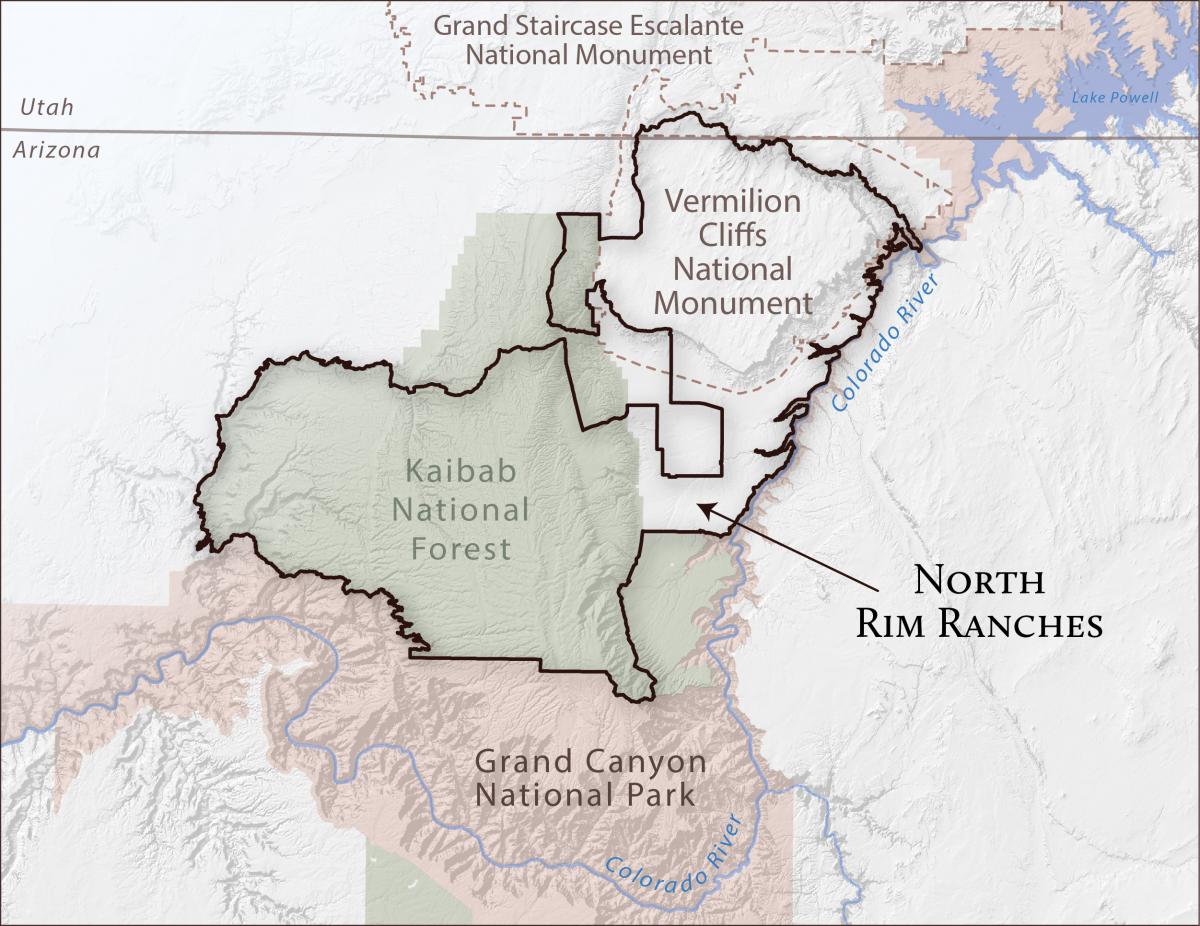
Connie would be the first to say that you don’t need professional expertise to appreciate the unique cultural resources of the Kaibab Plateau, despite her 20 year-tenure on the job (she’s one of the longest-serving Forest Service employees in the district).
“I am responsible for overseeing the stewardship of cultural resource sites on the North Kaibab. That covers a lot of ground,” says Connie.
It also covers a lot of time; most sites on the Kaibab are prehistoric, with some dating back 11,000 years.
Cultural sites found on the Kaibab Plateau are most closely affiliated with the Kaibab Paiute, Hopi, Zuni, and Navajo, and people from these tribes know more than anyone about the cultural meaning concentrated in thousands of sites scattered across the uplands and valleys of the area.
The Kaibab Plateau and surrounding country are part of Kaibab Paiute ancestral lands. We also work with Navajo on more recent 20th century sites. And local communities today have historical family ties to ranching, logging, and recreational activities on the Kaibab.
Cultural resources on public lands have not always been well-protected. The 1906 Antiquities Act initially raised awareness of the value of physical artifacts, but public lands management agencies didn’t employ many archaeologists until after the passage of the National Historic Preservation Act in 1966. This law set rules for translating concern into protection — it requires professional review of any ground-disturbing activities that may be part of Forest Service work, Grand Canyon Trust research, or other management projects.
Connie spends much of her time protecting archaeological sites that are within the boundaries of proposed and ongoing projects, such as tree thinning, controlled burns, timber sales, and fence construction, among others.
“We avoid adverse impacts to cultural sites. For example, for a vegetation thinning project, we will prohibit the use of ground-disturbing equipment at the site, though we may allow hand thinning. Or, in some areas where the site is below the surface, work may be performed over frozen ground.”
Once a cultural site is identified and management actions are adjusted to protect it, maintaining protection becomes important. After all, budgets and staffing for cultural resources have always been limited. Connie finds creative ways to work around this, but new problems are challenging.
“One thing that has changed since I began working for the Forest Service is the destructive effects of hotter, larger wildfires on cultural sites. We are having more intense fires and they can severely damage sites, both during the fire and after, from monsoon rains that may cause severe erosion. And fires remove vegetation that covered artifacts, so the potential for vandalism goes up.”
New problems demand innovative solutions, and this is where Connie and the Trust’s North Rim Ranches program have made some progress. The Trust has supported scientific modeling of Kaibab Plateau forests, identifying where fuel treatments (like thinning and controlled burns) could slow the spread of intense wildfires. And this information can also be used for cultural resource protection. Across the North Kaibab region, we have worked with Connie to locate and document over a thousand sites as part of the Kaibab Vermilion Cliffs Heritage Alliance.
With Connie’s leadership, the North Kaibab sponsors a biannual volunteer event, called “Passports in Time,” where citizens assist archaeologists in locating and documenting cultural sites and help with preservation projects, such as restoring historic cabins.
In 2016, volunteers on the North Kaibab provided over 1,000 hours of service that contributed some $20,000 in services to the American public.
Connie’s commitment to her work underlines the special value of our public lands for both cultural and natural resources. The North Kaibab harbors ancient archaeological sites and sacred sites important to native people that, for the most part, are only well-protected because they are located on public lands. Sites on private lands lack strong protections and have often been damaged or destroyed due to development, or in some cases, looting. For similar reasons, you don’t find many old-growth ponderosa pine forests in Arizona outside of public lands; most large, old trees on private lands were logged long ago.
Old forests and ancient cultural sites define the Kaibab Plateau for many people. But once cut, trees can grow back. “Remember,” Connie says, “we have thousands of sites on the North Kaibab, but cultural resources are non-renewable. Once an archaeological site is destroyed, it is gone forever.”

